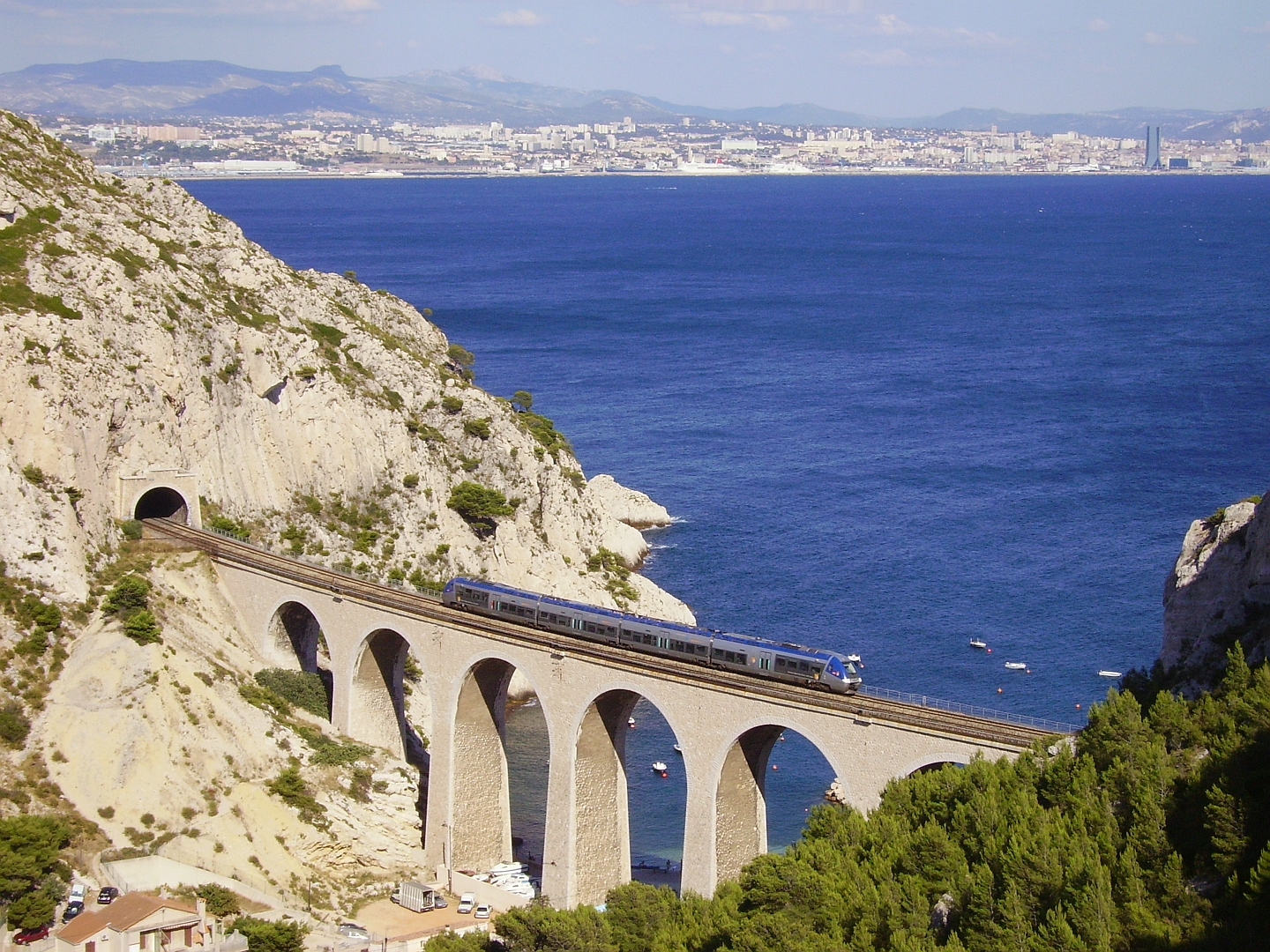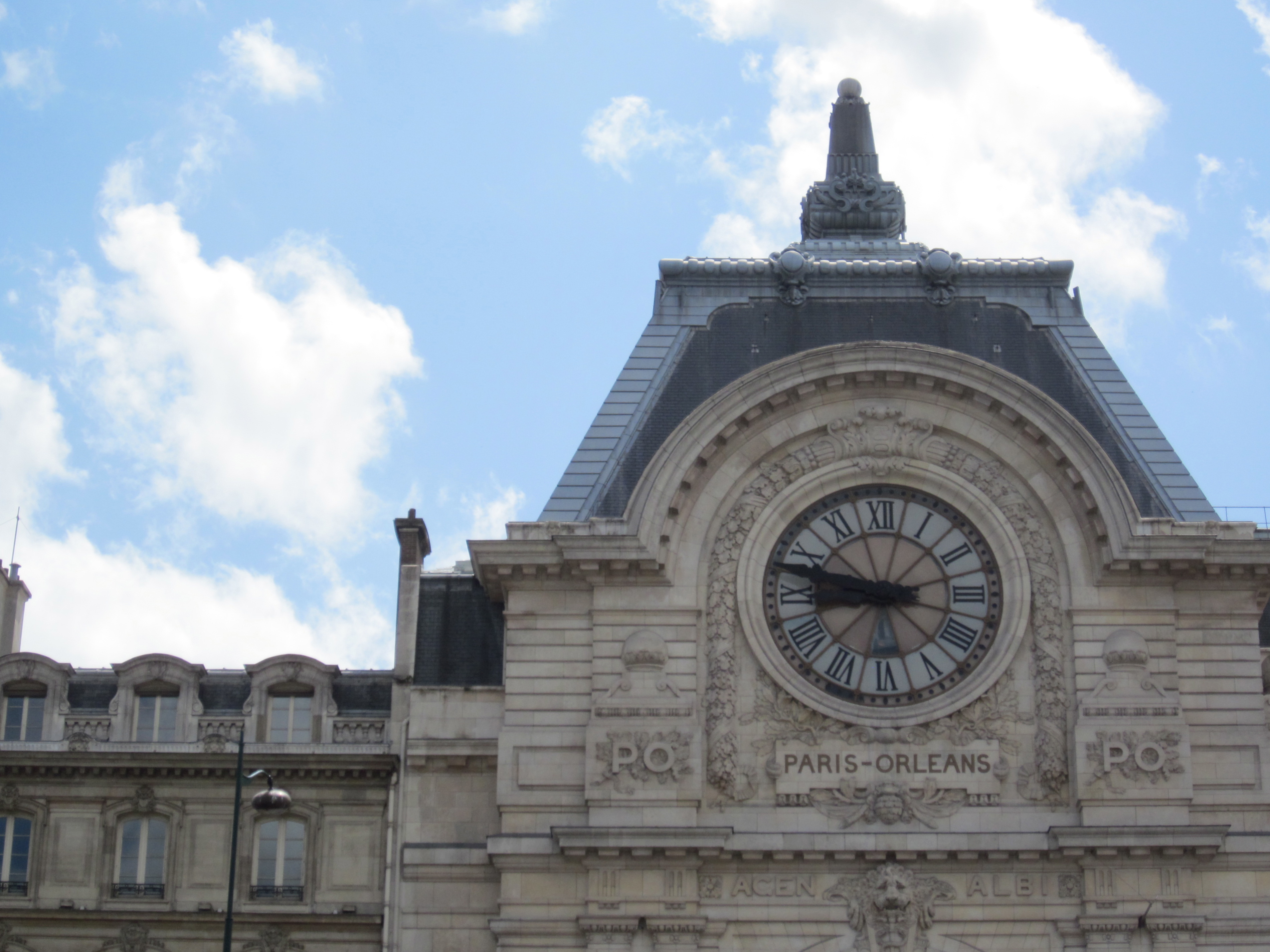|
Gare De Bergerac
Bergerac is a railway station in Bergerac, Nouvelle-Aquitaine, France. The station is located on the Libourne - Le Buisson railway line. The station is served by TER (local) services operated by SNCF. The station is 39m above sea level. It is at kilometre point 607.481 on the line from Libourne to Buisson. Formerly there was also a junction with the line to Magnac-sur-Touvre. History The station opened on 20 December 1875, built by the Compagnie du chemin de fer de Paris à Orléans The ''Compagnie du chemin de fer de Paris à Orléans'' (PO) was an early French railway company. It merged with the ''Chemins de fer du Midi'' to form the ''Chemins de fer de Paris à Orléans et du Midi'' (PO-Midi) in 1934. In 1938 the PO-Midi .... Train services The following services currently call at Bergerac: *local service (TER Nouvelle-Aquitaine) Bordeaux - Libourne - Bergerac - Sarlat-la-Canéda References Railway stations in France opened in 1875 Railway stations in Dordogne< ... [...More Info...] [...Related Items...] OR: [Wikipedia] [Google] [Baidu] |
Gare De Bergerac
Bergerac is a railway station in Bergerac, Nouvelle-Aquitaine, France. The station is located on the Libourne - Le Buisson railway line. The station is served by TER (local) services operated by SNCF. The station is 39m above sea level. It is at kilometre point 607.481 on the line from Libourne to Buisson. Formerly there was also a junction with the line to Magnac-sur-Touvre. History The station opened on 20 December 1875, built by the Compagnie du chemin de fer de Paris à Orléans The ''Compagnie du chemin de fer de Paris à Orléans'' (PO) was an early French railway company. It merged with the ''Chemins de fer du Midi'' to form the ''Chemins de fer de Paris à Orléans et du Midi'' (PO-Midi) in 1934. In 1938 the PO-Midi .... Train services The following services currently call at Bergerac: *local service (TER Nouvelle-Aquitaine) Bordeaux - Libourne - Bergerac - Sarlat-la-Canéda References Railway stations in France opened in 1875 Railway stations in Dordogne< ... [...More Info...] [...Related Items...] OR: [Wikipedia] [Google] [Baidu] |
Railway Station
Rail transport (also known as train transport) is a means of transport that transfers passengers and goods on wheeled vehicles running on rails, which are incorporated in tracks. In contrast to road transport, where the vehicles run on a prepared flat surface, rail vehicles (rolling stock) are directionally guided by the tracks on which they run. Tracks usually consist of steel rails, installed on sleepers (ties) set in ballast, on which the rolling stock, usually fitted with metal wheels, moves. Other variations are also possible, such as "slab track", in which the rails are fastened to a concrete foundation resting on a prepared subsurface. Rolling stock in a rail transport system generally encounters lower frictional resistance than rubber-tyred road vehicles, so passenger and freight cars (carriages and wagons) can be coupled into longer trains. The operation is carried out by a railway company, providing transport between train stations or freight customer facilit ... [...More Info...] [...Related Items...] OR: [Wikipedia] [Google] [Baidu] |
Bergerac, Dordogne
Bergerac (; ) is a subprefecture of the Dordogne department, in the region of Nouvelle-Aquitaine, Southwestern France. In 2018, the commune had a population of 26,823, which made it the department's second-most populated after the prefecture Périgueux. Located on the banks of the river Dordogne, Bergerac was designated a Town of Art and History by the Ministry of Culture in 2013. History In 1565, Charles IX of France visited Bergerac during his grand tour. On 17 September 1577, amidst the French Wars of Religion, the Treaty of Bergerac, also known as the Peace of Bergerac ( French: ''Paix de Bergerac''), was signed between Henri III of France and Protestants to put a temporary end to the conflict. The treaty was negotiated by important figures on each side of the conflict, namely Nicolas de Neufville, seigneur de Villeroy and Armand de Gontaut, baron de Biron on the King's side and François de la Noue and François, Duke of Montpensier on the Protestant side. Bergerac, wh ... [...More Info...] [...Related Items...] OR: [Wikipedia] [Google] [Baidu] |
Nouvelle-Aquitaine
Nouvelle-Aquitaine (; oc, Nòva Aquitània or ; eu, Akitania Berria; Poitevin-Saintongeais: ''Novéle-Aguiéne'') is the largest administrative region in France, spanning the west and southwest of the mainland. The region was created by the territorial reform of French regions in 2014 through the merger of three regions: Aquitaine, Limousin and Poitou-Charentes. It covers – or of the country – and has 5,956,978 inhabitants (municipal population on 1 January 2017). The new region was established on 1 January 2016, following the regional elections in December 2015. It is the largest region in France by area (including overseas regions such as French Guiana), with a territory slightly larger than that of Austria. Its prefecture and largest city, Bordeaux, together with its suburbs and satellite cities, forms the seventh-largest metropolitan area of France, with 850,000 inhabitants. The region has 25 major urban areas, among which the most important after Bordeaux are ... [...More Info...] [...Related Items...] OR: [Wikipedia] [Google] [Baidu] |
France
France (), officially the French Republic ( ), is a country primarily located in Western Europe. It also comprises of Overseas France, overseas regions and territories in the Americas and the Atlantic Ocean, Atlantic, Pacific Ocean, Pacific and Indian Oceans. Its Metropolitan France, metropolitan area extends from the Rhine to the Atlantic Ocean and from the Mediterranean Sea to the English Channel and the North Sea; overseas territories include French Guiana in South America, Saint Pierre and Miquelon in the North Atlantic, the French West Indies, and many islands in Oceania and the Indian Ocean. Due to its several coastal territories, France has the largest exclusive economic zone in the world. France borders Belgium, Luxembourg, Germany, Switzerland, Monaco, Italy, Andorra, and Spain in continental Europe, as well as the Kingdom of the Netherlands, Netherlands, Suriname, and Brazil in the Americas via its overseas territories in French Guiana and Saint Martin (island), ... [...More Info...] [...Related Items...] OR: [Wikipedia] [Google] [Baidu] |
Transport Express Régional
Transport express régional (, usually shortened to TER) is the brand name used by the SNCF, the French national railway company, to denote rail service run by the regional councils of France, specifically their organised transport authorities. The network serves French regions; Île-de-France (Transilien) and Corsica ( CFC) have their own specific transport systems. Every day, over 800,000 passengers are carried on 5,700 TER-branded trains.Le TER en 2030 ''SNCF'' Retrieved 2011-02-15 TER is part of , a branch of the SNCF dealing with urban and regional passenger rail, which also includes |
SNCF
The Société nationale des chemins de fer français (; abbreviated as SNCF ; French for "National society of French railroads") is France's national state-owned railway company. Founded in 1938, it operates the country's national rail traffic along with Monaco, including the TGV, on France's high-speed rail network. Its functions include operation of railway services for passengers and freight (through its subsidiaries SNCF Voyageurs and Rail Logistics Europe), as well as maintenance and signalling of rail infrastructure (SNCF Réseau). The railway network consists of about of route, of which are high-speed lines and electrified. About 14,000 trains are operated daily. In 2010 the SNCF was ranked 22nd in France and 214th globally on the Fortune Global 500 list. It is the main business of the SNCF Group, which in 2020 had €30 billion of sales in 120 countries. The SNCF Group employs more than 275,000 employees in France and around the world. Since July 2013, the SNCF Grou ... [...More Info...] [...Related Items...] OR: [Wikipedia] [Google] [Baidu] |
Magnac-sur-Touvre
Magnac-sur-Touvre () is a commune in the Charente department in southwestern France. Population See also *Communes of the Charente department The following is a list of the 364 communes of the Charente department of France. The communes cooperate in the following intercommunalities (as of 2020):Official site Communes of Charente {{Charente-geo-stub ... [...More Info...] [...Related Items...] OR: [Wikipedia] [Google] [Baidu] |
Compagnie Du Chemin De Fer De Paris à Orléans
The ''Compagnie du chemin de fer de Paris à Orléans'' (PO) was an early French railway company. It merged with the ''Chemins de fer du Midi'' to form the ''Chemins de fer de Paris à Orléans et du Midi'' (PO-Midi) in 1934. In 1938 the PO-Midi was nationalized with five other companies to become a part of the ''Société nationale des chemins de fer français'' (SNCF). History Beginnings as railway company The company was founded on 13 August 1838 under the name ''Compagnie du chemin de fer de Paris à Orléans'' (PO). It had the right to form a limited company and was equipped with a starting capital of 40 million francs. In addition, the company had one of the French government's awarded temporary concession of 70 years, to build and operate a railway between the cities of Paris and Orléans. It had its headquarters in Paris. The first president of the board was François Bartholony. The first operation of the line dated 20 September 1840, but it only reached to Corbei ... [...More Info...] [...Related Items...] OR: [Wikipedia] [Google] [Baidu] |
Railway Stations In France Opened In 1875
Rail transport (also known as train transport) is a means of transport that transfers passengers and goods on wheeled vehicles running on rails, which are incorporated in tracks. In contrast to road transport, where the vehicles run on a prepared flat surface, rail vehicles (rolling stock) are directionally guided by the tracks on which they run. Tracks usually consist of steel rails, installed on sleepers (ties) set in ballast, on which the rolling stock, usually fitted with metal wheels, moves. Other variations are also possible, such as "slab track", in which the rails are fastened to a concrete foundation resting on a prepared subsurface. Rolling stock in a rail transport system generally encounters lower frictional resistance than rubber-tyred road vehicles, so passenger and freight cars (carriages and wagons) can be coupled into longer trains. The operation is carried out by a railway company, providing transport between train stations or freight customer faciliti ... [...More Info...] [...Related Items...] OR: [Wikipedia] [Google] [Baidu] |





